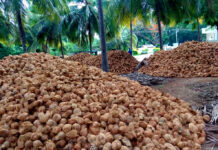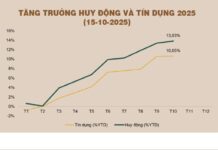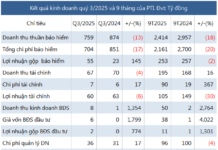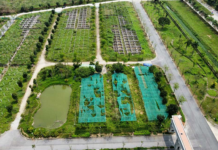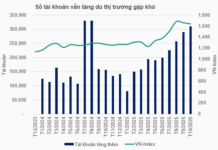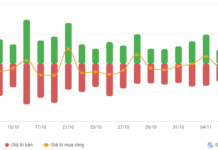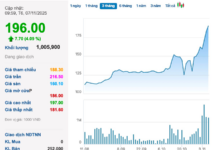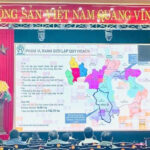USD Surge Erodes Corporate Profits
In an interview with **Tiền Phong** newspaper, Mr. Mai Huu Lam, General Director of Cat Van Loi Industrial Electrical Equipment Production JSC, revealed that the company’s profit margin was a mere 5-6%, and the exchange rate fluctuations since the beginning of the year could potentially eliminate these earnings. “Input material prices have gone up by 25%; the prices of copper, aluminum, steel, and oil have all increased; coupled with the exchange rate, businesses are disheartened and disinclined to continue operations. We’re already losing money,” Mr. Lam lamented.
Meanwhile, amidst economic hardships, companies are forced to lower their finished product prices to remain competitive. The more they produce, the greater their losses become. However, they cannot afford to cease operations as they need to sustain their workforce and maintain their teams. Apart from steel, Cat Van Loi relies entirely on imported raw materials for its entire production.
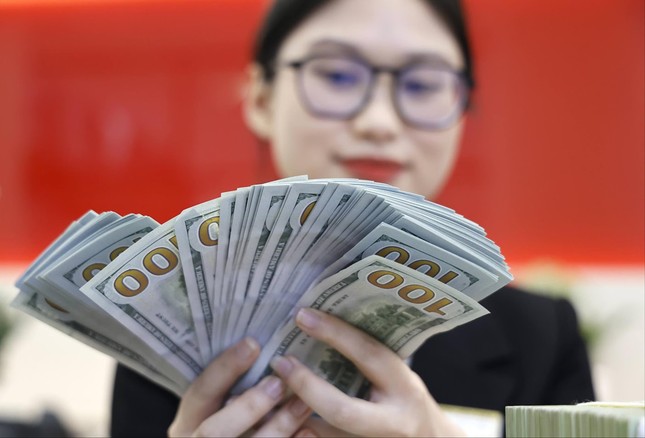
The exchange rate remains high after the State Bank’s intervention. Photo: Như Ý.
According to Mr. Lam, the current business environment is more challenging than it was during the COVID-19 pandemic. “The pandemic hindered travel, disrupted transportation, but raw material prices were not as volatile as they are now. Meanwhile, the current situation is impacted by geopolitical tensions, leading to a sharp increase in the prices of input commodities. There is a significant price difference between the time a contract is signed and when it is executed,” Mr. Lam explained, citing an example of a project that was previously contracted to be completed by 2026. He expressed uncertainty about the future exchange rate.
“If the US dollar reaches 27,000 dong/USD, the company will incur an additional 10% in expenses, compounded by inflation, salary increases for employees from July 2024… it’s all piling up,” Mr. Lam noted with concern.
To mitigate exchange rate risks, Mr. Lam’s company has explored hedging tools, such as forward foreign exchange contracts.
In the aviation industry, many costs, including airport parking and runway fees, aircraft leasing, fuel purchases, and pilot salaries, are denominated in US dollars. At the 2024 monetary policy implementation conference, Mr. Dang Ngoc Hoa, Chairman of the Board of Directors of Vietnam Airlines, stated that a 1% variation in the exchange rate would cost the airline 300 billion dong. If the exchange rate fluctuated by 5%, the company’s annual expenses would rise by 1,500 billion dong. Vietnam Airlines expressed its desire for a stable exchange rate, at the lowest possible level.
The State Bank of Vietnam (SBV) has indicated that it will closely monitor market developments to simultaneously control inflation and align with the government’s and Prime Minister’s objectives of reducing interest rates. Additionally, the bank will manage the exchange rate in line with market circumstances, implement a coherent set of monetary policy tools and measures to stabilize the foreign exchange and foreign exchange markets, and contribute to controlling inflation and maintaining macroeconomic stability.
Mr. Le Manh Hung, Chairman of the Member Council of the Vietnam Oil and Gas Group (PVN), also highlighted that exchange rate volatility and risks significantly impact the group’s business operations, particularly in terms of managing risks associated with exchange rate fluctuations. PVN currently has foreign currency debt of 38,000 billion dong, equivalent to approximately 1.55 billion USD.
The Pressure of a Strong US Dollar
At 9:00 AM on April 24, the SBV announced a central exchange rate of 24,274 dong, a decrease of 1 dong compared to the previous day. This marked the first time in the past two weeks that the SBV had reduced the central exchange rate. The State Treasury’s Foreign Exchange Reserve Management Agency maintained the selling price of USD at 25,450 dong/USD.
With a +/-5% margin, the floor and ceiling exchange rates applicable to commercial banks on April 24 were 23,061-25,487 dong/USD. Consequently, the USD price at banks collectively decreased by 1 dong to comply with the prescribed ceiling. Specifically, at Vietcombank, the USD is now quoted at 25,177-25,487 dong for buying and selling, respectively. BIDV and VietinBank apply rates of 25,187-25,487 dong/USD and 25,180-25,487 dong/USD, respectively.
Previously, the central exchange rate had steadily increased, particularly from April 15 onwards, which also marked the day when the USD surged to its ceiling. From April 15 to 23, the central exchange rate increased by 192 dong. Simultaneously, the selling price of USD at banks increased from 25,180 dong to 25,488 dong/USD. In the open market, the price of 1 USD was around 25,750 – 25,850 dong for buying and selling.
At a press conference held by the SBV on April 19, Mr. Pham Chi Quang, Director of the Monetary Policy Department, attributed the recent surge in exchange rate to the sharp appreciation of the US dollar index (DXY) in the first three months of the year, with an increase of over 5%, which has exerted significant pressure on the domestic currencies of many countries, including Vietnam. Furthermore, elevated import demand, particularly from oil, steel, and iron enterprises, coupled with increased foreign currency purchases by businesses, has contributed to the exchange rate surge. Additionally, the reduction in domestic interest rates to stimulate economic



